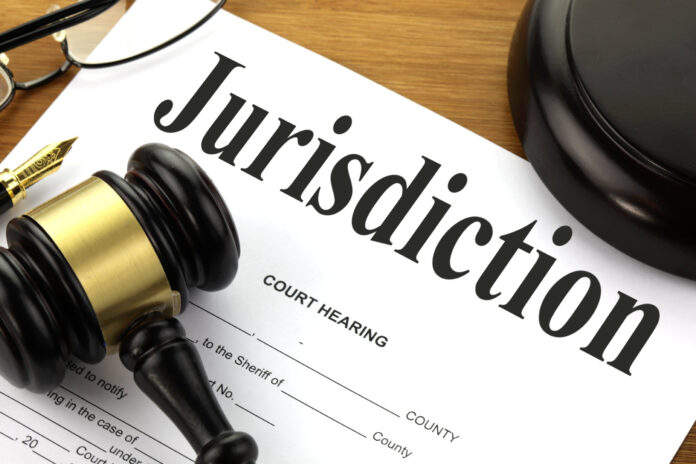In the intricate tapestry of law that binds our society, one crucial thread weaves its way through every jurisdiction: the statute of limitations. Like a silent sentinel, it stands guard over our legal system, dictating the timeframes within which legal actions can be initiated.
But as we embark on a journey through the world of legal insights, we’ll discover that the statute of limitations is far from uniform. Instead, it’s a nuanced and ever-changing landscape, with each jurisdiction painting its own vivid strokes of justice.
Join us as we unravel the complexities, similarities, and distinctions that arise when navigating the statute of limitations in different jurisdictions.
In this exploration, we’ll shed light on the fundamental principles that underpin this legal concept and gain a deeper understanding of how it influences our legal rights and responsibilities.
So, fasten your seatbelts, fellow legal eagles, as we embark on a voyage through the intricate realms of statute limitations, where time is the ultimate arbiter of justice.
When it comes to legal cases, especially those as severe as mesothelioma, time is of the essence. Mesothelioma, often caused by asbestos exposure, has a long latency period, and this makes the statute of limitations for mesothelioma particularly crucial.
If you’re unfamiliar with the term, the statute of limitations sets a deadline by which legal action must be taken. This article sheds light on how the statute varies across jurisdictions and the importance of promptly acting.
Deciphering the Statute of Limitations

The statute of limitations serves as a temporal framework akin to a stopwatch, dictating the finite period within which a legal claim must be initiated. This temporal constraint commences from the date of the incident in question or from the point at which an individual becomes aware of the issue.
The rationale underlying this legal doctrine is twofold: to ensure the prompt assertion of claims while evidence remains fresh and available, and to provide both plaintiffs and defendants with a reasonable degree of legal certainty.
The Unique Landscape of Mesothelioma Cases
Mesothelioma, a malignant cancer predominantly attributed to asbestos exposure, introduces a unique dynamic into the statute of limitations discourse. Its distinctiveness lies in the protracted latency period associated with the disease.
Symptoms may remain latent for decades, often surfacing long after the initial asbestos exposure. Consequently, the commencement of the statute of limitations clock in mesothelioma cases typically coincides with the date of diagnosis or the moment when an affected individual reasonably should have become aware of the condition.
Jurisdictional Variations: A Legal Patchwork

Legal principles and doctrines rarely exhibit universal uniformity, and the statute of limitations is no exception. The temporal boundaries governing legal actions exhibit considerable variation across different jurisdictions, both within states and countries.
For instance, in one jurisdiction, the statute of limitations may be a mere two years, while in another, it might extend to five years or more.
It is incumbent upon individuals contemplating legal action to meticulously discern and adhere to the precise time limits prescribed by the jurisdiction in which they intend to file a lawsuit, lest legal constraints thwart their pursuit of justice.
The Imperative of Legal Counsel
Given the intricacies and variations surrounding the statute of limitations, enlisting the expertise of legal professionals becomes imperative. Attorneys specializing in mesothelioma cases possess the understanding to navigate the labyrinthine nuances of the law in diverse jurisdictions.
Their counsel is invaluable, guiding victims and their families in taking timely and informed legal action within the requisite timeframe, thereby safeguarding their pursuit of justice.
Unveiling Exceptions and Extensions

Legal nuances often accommodate exceptional circumstances, providing recourse beyond the standard statute of limitations. For instance, instances of mental incompetence following injury or diagnosis might lead to suspending the statutory clock.
Additionally, certain jurisdictions adopt “discovery rules,” wherein the temporal countdown is initiated not upon the occurrence of the injury but upon its discovery. These exceptions and extensions, though nuanced, play a pivotal role in ensuring equitable access to justice.
ELSM Law explains, “The statute of limitations also applies to claims against asbestos trusts, which are funds set up by bankrupt asbestos companies to compensate victims through settlements.”
State-Specific Variations
When it comes to the statute of limitations for mesothelioma cases, the legal landscape can be incredibly intricate due to state-specific variations. While the article acknowledges jurisdictional differences, it’s vital to delve deeper into how these variations play out within a single country.
In the United States, for instance, every state maintains its own set of laws and regulations, including statutes of limitations. These variations can significantly impact individuals seeking legal remedies for mesothelioma-related injuries.
To illustrate the point further, let’s consider a few specific examples. In California, there is a two-year statute of limitations for personal injury claims, meaning that individuals have a relatively short window of time to file a lawsuit after their mesothelioma diagnosis.
On the other hand, neighboring states like Oregon and Washington provide a more lenient approach with a three-year statute of limitations.
Importance of Timely Action

Emphasizing the critical importance of taking timely legal action in mesothelioma cases cannot be overstated. Mesothelioma is notorious for its long latency period, often spanning several decades between asbestos exposure and diagnosis. This extended timeframe underscores the urgency of prompt legal action.
Delaying the pursuit of legal remedies can lead to the expiration of the statute of limitations, rendering victims unable to seek compensation or justice.
It’s crucial for individuals diagnosed with mesothelioma to consult with an attorney as soon as possible to initiate the legal process. This not only ensures compliance with time constraints but also maximizes the chances of a successful legal outcome.
Evidence Preservation
Preserving evidence is a fundamental aspect of mesothelioma cases, given the disease’s protracted latency period. Victims should be advised to meticulously document any potential asbestos exposure history, including details of the asbestos-containing products or environments they encountered.
Additionally, maintaining thorough medical records is essential, as these records can serve as crucial evidence in legal proceedings. Records of diagnoses, treatments, and the progression of the disease can be pivotal in establishing a causal link between asbestos exposure and mesothelioma.
Legal Resources
Providing information about accessible legal resources and support for mesothelioma cases is essential for those navigating the complex legal landscape. Organizations specializing in asbestos-related cases, legal aid services, and mesothelioma support groups can offer invaluable guidance and assistance.
These resources can help victims and their families understand the legal process, connect with experienced attorneys, and access the support they need during what can be a challenging journey. Ensuring that individuals have access to such resources can alleviate some of the burdens associated with pursuing legal action in mesothelioma cases.
Understanding the statute of limitations is crucial, especially for diseases with long latency periods like mesothelioma.
Whether you or someone you know is considering legal action related to an injury or diagnosis, it’s essential to be aware of time constraints. With the right information and timely action, victims can navigate the legal system effectively and seek the justice they deserve.









